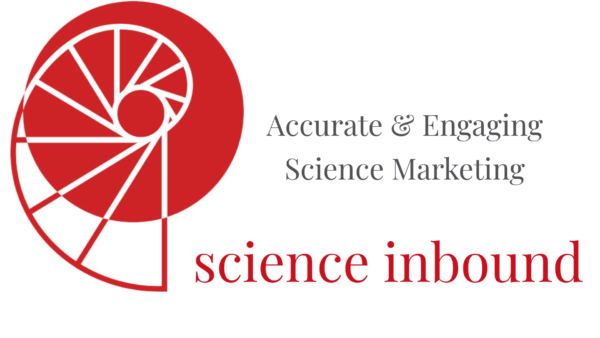Accessibility and SEO: why the European Accessibility Act is a strategic opportunity

Website accessibility might sound like just another compliance requirement on an already long list. But what if this law is more than a bureaucratic hurdle? What if it’s a clear signal that effective communication, which performs well in search engine results, starts with accessibility?
We recently updated our website with both accessibility and SEO in mind. As independent freelancers, we’re not required to. But we believe it’s the right thing to do. And as we’ve learned, these two goals are far more aligned than many people realize.
What’s changing with the new law?
The European Accessibility Act (EAA) is moving accessibility from a “nice-to-have” to a legal requirement for most private-sector websites and digital services across the EU. The underlying concept: your online content must be usable by people with different abilities – whether that means reading text, navigating by keyboard, or getting info from images or video.
Each country is rolling out its own version of the rules (Germany, for instance, calls it the Barrierefreiheitsstärkungsgesetz), but the trend is clear: accessibility is becoming the baseline, not the exception, for digital communication in Europe.
Small businesses and freelancers are officially exempt (See the interactive check to learn if your business is affected). However, the ripple effects will be felt across industries – especially in B2B sectors like biotech, where global clients, grant reviewers, and institutional buyers increasingly expect accessible and user-friendly digital experiences.
Rather than seeing it as a bureaucratic obligation, this shift is better viewed as a quiet revolution – a realignment of digital best practices that benefits us all.
What is accessible communication?
“Accessibility” often feels like someone else’s problem – a checkbox for IT teams or a mandate for public websites. (Fun fact: When I searched stock image databases for “website accessibility,” most results showed people in wheelchairs using laptops – which, as far as I can tell, misses the mark.)
But the truth is much simpler: accessible communication isn’t just for people with specific needs. It’s good communication – and it helps more of us, more often, than we might expect. Including yourself. And us.
There are everyday situations where accessibility features quietly make things easier. Just imagine you are working in a noisy lab (or a quiet, shared office). Captions can help you follow a training video without missing a detail or bothering anyone nearby.
If you’re like me, and your eyesight isn’t what it used to be, that readable font size and good contrast can be a welcome relief. And not being able to use a mouse – maybe because you have broken an arm or are suffering from repetitive strain injury – lets you find out whether a website can be navigated by keyboard alone.
At its core, accessible communication means making your content clear, understandable, and available in ways that everyone can use. It’s not about dumbing things down. It’s about removing unnecessary barriers.
What biotech marketers can gain
For biotech marketers, accessibility might sound like a legal issue or a technical checklist. However, it’s also a powerful lever for enhancing content performance, trust, and user reach, particularly in international B2B settings.
For example, most biotech communication happens in English. But many of your customers, collaborators, and prospects are non-native speakers – from researchers in France or Korea to purchasing managers in Germany or Brazil. The more precise and structured your content is, the more useful it becomes for a global audience.
Plus, accessible content enhances the user experience, and in turn, improves SEO metrics. Visitors stay longer, engage more, and are more likely to return.
It also sends a subtle but powerful signal: we want you to understand us. That kind of clarity builds trust – whether your reader is a lab manager or a potential investor.
When your content is both accessible and optimized, it works harder for you – not just in rankings, but in resonance.
We’re not accessibility consultants. But when we recently relaunched the Science Inbound website, we made a conscious effort to build with both accessibility and SEO in mind.
Why? Because we want as many people as possible to find and use our content – and because the process itself helped us better understand how accessible design choices affect real users.
The more we learn from improving our own content, the better equipped we are to support our clients. That’s the whole point of accessibility: not just compliance, but connection.
Simple fixes, big impact: how to get started
What improves accessibility often boosts SEO, and vice versa. When your site is easier to navigate, interpret, and interact with, people stay longer. They click more. And yes, search engines notice.
Otherwise, even if the content is there, if it’s not structured or labeled in the right way, neither Google nor generative AI tools will know it exists.
Not sure where to start? Begin with the basics – small, structural shifts that make a measurable difference. Here’s how:
1. Start with structure: What’s visible matters most
First, look at how your content is organized. Can someone understand the page just by scanning the headings?
- Use a clear heading hierarchy (H1 → H2 → H3) to guide readers, and signal structure to crawlers.
- Make headings descriptive, not generic. “Download protocol checklist” is more meaningful than “Click here.”
- Rework long pages into digestible chunks. Use short sections, summaries, and white space to create breathing room.
2. Think beyond visuals
Not everyone consumes content the same way. Images, colors, and videos shouldn’t be your only carriers of meaning.
- Add meaningful alt text to images. This isn’t just for screen readers; it helps search engines understand visual context.
- Use high-contrast text and legible fonts to improve readability for everyone (not just those with visual impairments).
- Include captions on videos. They support understanding in noisy offices, during silent commutes, or when viewers prefer to read.
- Screen-readers typically don`t pick up bold or highlighted text. Write so that it is clear from the content itself that a particular information is important.
3. Enable keyboard navigation – and clean up your code
Some users rely entirely on the keyboard to navigate. Can your site support them?
- Stick to semantic HTML elements like <header>, <nav>, and <main>. They provide essential structure for assistive technologies – and for search crawlers.
- Clean, logical code doesn’t just make your dev team happy. It directly affects how well your site performs in search and accessibility audits.
Tools and further reading
- Use checking tools such as Silktide , AccessibilityChecker, or WebAim to evaluate your website
- Consult the official WCAG 2.1 standards: WCAG 2.1 Checklist – w3.org
These changes are straightforward, actionable, and practical starting points that help both real users and search engines better understand what your site is about.
Good content serves both people and algorithms
Website accessibility and SEO aren’t competing goals; they’re parallel strategies that often point in the same direction. It’s not just about ticking compliance boxes or chasing rankings. By designing your site with both in mind, you reduce legal exposure and make it easier for people to find, use, and trust your offer. That means better visibility, stronger engagement, and ultimately, a more inclusive experience for everyone who lands on your page – regardless of how they get there.
Note: We are not providing any legal advice or professional IT support. If your organization is required to comply with EAA requirements, consulting a WCAG accessibility expert is strongly recommended.
Interested in learning more? Let’s talk.
Image: muntazar mansory from Pixabay
- Using AI for biotech and scientific translation – with human precision - November 11, 2025
- AI in science communication: help or hype? - October 6, 2025
- How an outside look can help you develop a better biotech USP - August 4, 2025
